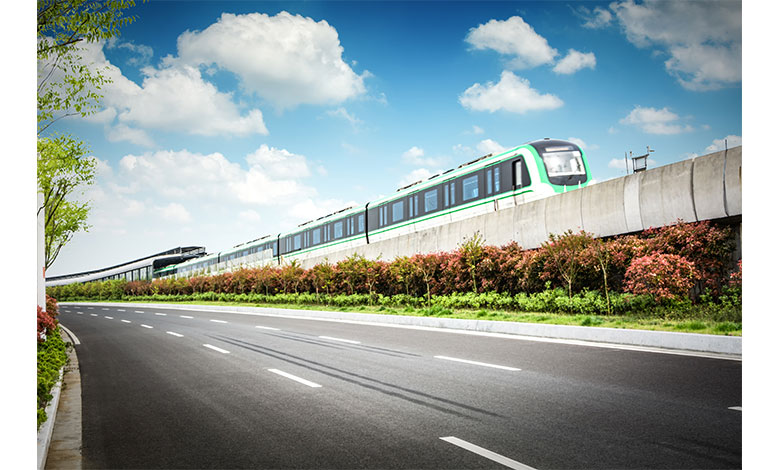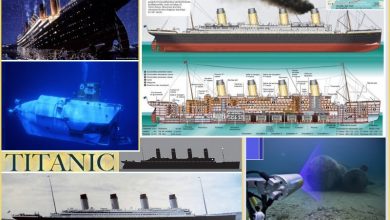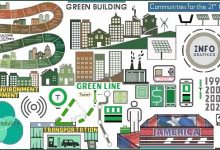
If you don’t live in a developed country with existing infrastructure transport such as computer-operated sky trains, hyperloop technology might be a complex concept to grasp. Sky trains and sea busses are two infrastructure transport methods I had to acquaint myself with the first time I set foot on international soil. Populations of first world countries are more open-minded to the idea of a refurbished transportation system to provide enhanced connectivity between people and cities. They would be more susceptible to understand the technology to amalgamate magnetism and pressure into a tube (similar to the interior of an airplane) and to imagine being propelled at lightning speed through this pressurized tube. Travel between two cities would be faster than an airplane flight. Paint a picture in your mind of a modernized version of a sky train traveling in a second tube from the start of the journey to the end destination with the second tube (tunnel) having a park recreation area on the ground and an elevated, green, car-free walkway on the tunnel’s roof. If you are a citizen of a developed country that partakes in the prevention of global warming, it becomes easier to accept that computers can be electrified by wind and water. Imagine a network system with bladeless wind turbines positioned at particular intersections to lower energy consumption, a tunnel fitted with solar-powered light emission diodes (LEDs) to function as an interactive information board, and flexible solar panel components.
Hyperloop transportation promises to be a part of life in the near future. In 2013, the billionaire Elon Musk (CEO of Tesla, SpaceX, and the Boring Company) envisioned a hyperloop transportation system (traveling at lightning speed through a partly depressured tube without friction or air resistance) as a high-speed public transport alternative to a train or airplane. I have seen comments on the internet implying that Elon Musk is obsessed with tunnels, but he deserves credit as the inventor of the hyperloop tunnel concept. I believe that by the year 2030 his name will be in history books as being the inventor of the world’s fastest and most efficient transportation system. When taking some of his other projects into consideration, he could be credited with more astounding revelations. He recently announced that his American Boring Company is building a tunnel that signifies an underground hyperloop tunnel between New York and Washington and that (in addition to the hyperloop tunnel) he intends to launch his full road legal ‘autonomous transport cars’ and ‘ground to car’ elevators. His 2020 product launch was more than a demonstration of a hyperloop tunnel. The company’s initial full system demonstration of a short tunnel and ‘loop’ offered a public test ride with a complete electric transport system inside the tunnel. A human gesture of Elon Musk is that he ‘open-sourced’ his hyperloop transportation system concept to draw architects and inventors into his mind-blowing projects.
MAD Architects’ founder, Ma Yansong, serves as an adjunct professor at the School of Architecture, Tsinghua University, China Mainland (one of the top research universities in Beijing). He is also a visiting professor at Beijing University of Civil Engineering and Architecture. His buildings are futuristic and inspired by nature. MAD Architects conceived and invented the world’s first hyperloop passenger capsule prototype (hyperloop train) as a single-mold fiberglass structure. The architect firm’s proposal exploited solar and wind energy to power the transportation system. They incorporated tube stations or portals which would be centrally located and easily accessible through existing infrastructure transport. In 2016, Bjarke Ingels Group and Virgin Hyperloop disclosed plans to travel between the United Arab Emirates cities (Abu Dhabi and Dubai) in a mere twelve minutes. The philosophy of Hyperloop Transportation Technologies (HyperloopTT) is to develop transportation based on the concept of a hyperloop. Initially, MAD Architects collaborated with hyperloopTT for the 2020 expo in Dubai. HyperloopTT assigned MAD to illustrate how man-made structures can bond with nature (through a new urban infrastructure) by designing an adaptable capsule to act as structural support for the hyperloop transportation system to be easily incorporated between various platforms such as from busy city centers to remote deserts. MAD and HyperloopTT collaborated with Priestmangoode (the transport design company that won a gold award at the 2017 London design awards) to construct a full-scale prototype passenger capsule.
Hyperloop transportation is now a reality. Since MAD’s invention (in October 2018), the Spain aerospace facility of hyperloopTT in Puerto de Santa Maria designed a full-scale passenger capsule ‘Quintero One’. It was almost entirely constructed from hyperloopTT’s newly designed light metal Vibranium. The customized dual-layer compound material consists of strong carbon bonds. The unique diamond structured composition of Vibranium creates a high-speed sound. As a result, an impact on the force of gravity would allow kinetic energy to be quickly distributed throughout the capsule. The CEO and co-founder of hyperloopTT, Dirk Ahlborn, informs that it took 21,000 skilled engineering hours, 75,000 rivets, 72 sensors, 82 carbon fiber panels, 7,200 square meters of fiber, and 5,000 assembly hours to build Quintero One. It weighs 5 tons, is 32 meters long (with an inner cabin length of 15 meters), and promises to reach a speed of 1,207 kilometers (750 miles) per hour. The capsule was tested at hyperloopTT’s research and development center in Toulouse, France. According to the Chairman and co-founder of hyperloopTT, Bibop Gresta, the capsule is complete and ready to be used on the first commercial track. Virgin Hyperloop intends to achieve safety certification by 2025 and commercial operations to begin in 2030. After years of testing and developing hyperloop technology at its full-scale test site (and ahead of 2025) the founder of the Virgin Group, Sir Richard Branson, was excited to announce that ‘we’re one step closer to making hyperloop travel a reality for people everywhere.’ The hyperloop certification center (HCC) in West Virginia, USA, whose building was designed by the Bjarke Ingels Group, ignites the global hyperloop voyage. Apart from regulating and developing hyperloop technology, the HCC will generate a new ecosystem, potentially creating thousands of employment opportunities in manufacturing, construction, and high technology. The venture underscores the suitability of regional funding projects for hyperloop transportation systems. In July 2020, the Non-traditional and Emerging Transportation Technology (NETT) council and the United States Department of Transportation (USDOT) disclosed an initiative to develop a hyperloop transportation network.











